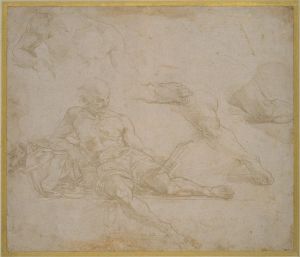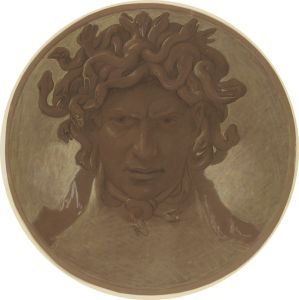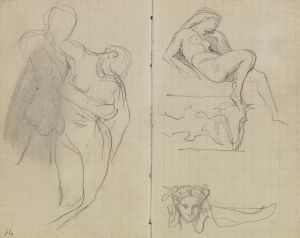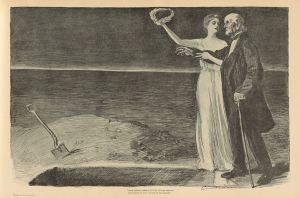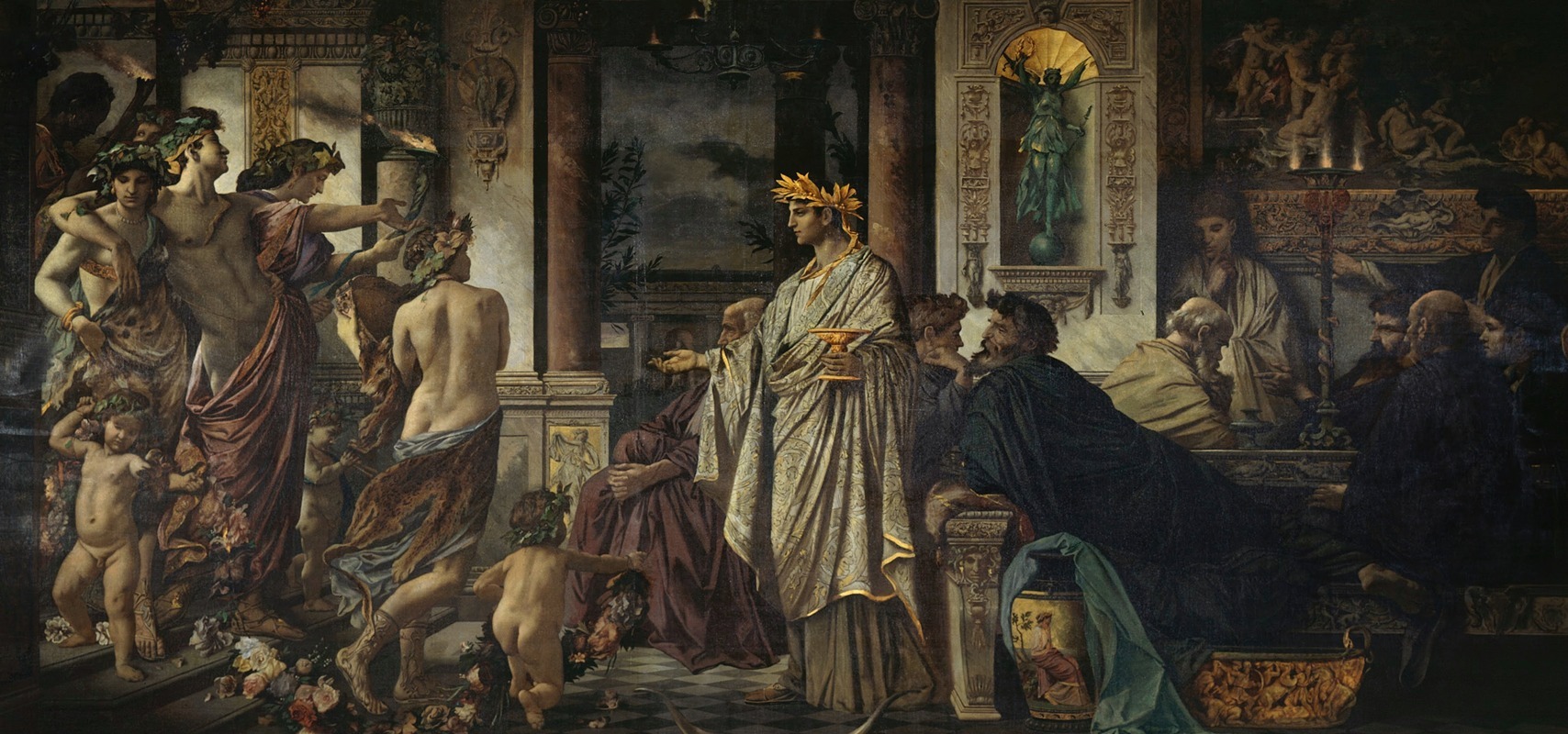
The Symposium
A hand-painted replica of Anselm Feuerbach’s masterpiece The Symposium, meticulously crafted by professional artists to capture the true essence of the original. Each piece is created with museum-quality canvas and rare mineral pigments, carefully painted by experienced artists with delicate brushstrokes and rich, layered colors to perfectly recreate the texture of the original artwork. Unlike machine-printed reproductions, this hand-painted version brings the painting to life, infused with the artist’s emotions and skill in every stroke. Whether for personal collection or home decoration, it instantly elevates the artistic atmosphere of any space.
Anselm Feuerbach's "The Symposium" is a notable painting by the German artist, created in 1869. Feuerbach, a prominent figure in the 19th-century German art scene, was known for his classical style and his ability to convey emotion and narrative through his works. "The Symposium" is a testament to his skill and his interest in classical themes, drawing inspiration from ancient Greek culture and philosophy.
The painting depicts a scene from Plato's "Symposium," a philosophical text that explores the nature of love through a series of speeches by various characters at a banquet. Feuerbach's interpretation captures the essence of this intellectual gathering, focusing on the interaction and expressions of the figures present. The composition is carefully arranged to highlight the dialogue and the contemplative atmosphere of the symposium.
Feuerbach's use of color and light in "The Symposium" is particularly noteworthy. He employs a subdued palette, dominated by earthy tones and soft lighting, which enhances the classical feel of the painting. The figures are rendered with meticulous attention to detail, their poses and gestures conveying a sense of introspection and engagement with the philosophical discourse. This attention to detail reflects Feuerbach's academic training and his admiration for the Renaissance masters, whose influence is evident in his work.
The painting is also significant for its reflection of Feuerbach's own philosophical interests. He was deeply influenced by the German philosopher Ludwig Feuerbach, his uncle, whose ideas about humanism and the nature of religion resonated with him. This intellectual background is evident in "The Symposium," where the focus is on the exploration of ideas and the human condition.
"The Symposium" is housed in the Alte Nationalgalerie in Berlin, where it is part of a collection that showcases the evolution of German art. The painting is an important example of Feuerbach's contribution to the 19th-century art movement known as the Düsseldorf School, which emphasized a return to classical themes and techniques.
Feuerbach's work, including "The Symposium," was highly regarded during his lifetime, although he struggled with recognition and financial stability. His dedication to his art and his commitment to classical ideals have ensured his place in art history as one of the leading figures of his time. "The Symposium" remains a significant piece for its artistic merit and its reflection of the intellectual currents of the 19th century.
In summary, Anselm Feuerbach's "The Symposium" is a masterful painting that captures the spirit of classical philosophy through its depiction of a scene from Plato's work. Its careful composition, use of color, and attention to detail make it a standout piece in Feuerbach's oeuvre and a valuable part of the Alte Nationalgalerie's collection.





